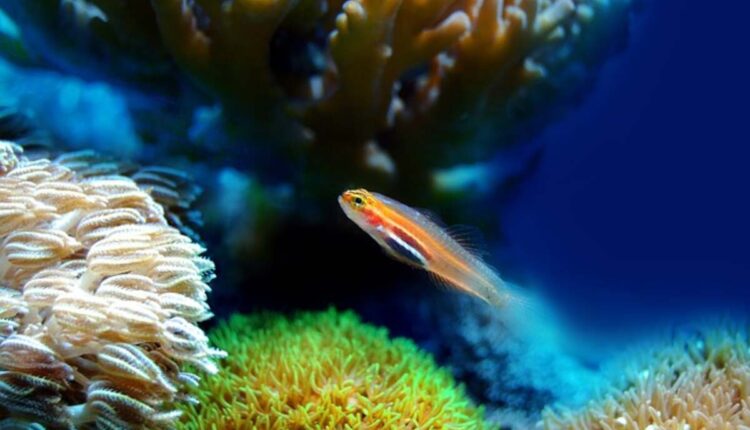Different-sized saltwater aquariums are available. Some aquarists prefer having a “fish only” tank, while “reef aquarium” keepers create an environment as close as possible to the ocean floor. Hobbyists who maintain reef aquariums typically have only a few fish. Still, even with a small population, all of the species in the aquarium can become stressed if the new fish aren’t introduced properly.
When making their final fish selection, hobbyists should remember a few things. If you already have fish, coral, or vertebrates in your tank, figuring out which fish will get along with them is crucial. Even though there are lists of compatible and incompatible fish compiled by seasoned hobbyists, it’s vital to remember that fish, like people, have unique personalities. This suggests that a species’ reaction may deviate from expectations when confronted with a novel setting.
Fish reproduction is another critical consideration. In other words, is this a wild catch or captive-bred species? Fish raised in aquariums are more resilient and can better adapt to new conditions than those caught in the wild and introduced to an entirely new environment.
It would be best if you took a few actions to introduce a new fish to the aquarium. All marine animals should be confined in a separate aquarium for two weeks before being introduced to the main tank; this will limit the risk of introducing diseases and parasites. Dim the lighting in the room where the box will be opened and turn off the aquarium lights. Stress and trauma caused by unexpected exposure to intense rays will be mitigated. If the fish were bought at a nearby shop, there’s no need to turn out the lights.
Keep the bag undisturbed for 15 minutes while it floats in the fish tank. With time, the water inside the bag will reach the ideal temperature for your aquarium. After 15 minutes, open the bag at the tie and roll the top edges down to make a small air pocket inside the bag’s rim. This will keep the bag level on the water’s surface and prevent it from sinking. Every four to five minutes pour one-half cup of aquarium water into the bag. Do this until the bag is full.
Remove the shipping bag and pour half of the water from the tank. Put the bag back in the aquarium, and add another half cup of water every four minutes. Instead of releasing water from the shipping bag into your aquarium, remove the bag, net the fish, and discard the water.
Although it will take some time, this procedure should not take more than an hour. Even if the new arrival looks dead, continue with the operation. The aquarium should be darkened for at least four hours after introducing new species.
One of the established tank mates may try to intimidate the newcomer. Instead of making the newcomer acclimatize to the bully, the aquarium’s confinement system should be used. A perforated basket or a floating tank inside the aquarium could corral the aggressive fish.
Provide plenty of hiding places for young fish, such as rocks, plants, or other protected spots. This has the added benefit of reducing stress in the aquarium, which can, in turn, minimize aggression from other fish. The health of your aquarium’s inhabitants depends on your attention to detail when introducing new species.
When introducing fish, it is ideal to do it in groups. This is so because fewer isolated incidents of harassment against an individual are likely to occur. Feeding your aquarium inhabitants before introducing them to any new inhabitants will help keep things peaceful. If you want to introduce fresh fish to an existing tank, you should try moving the decorations about to confuse the fish already there and break up any territorial disputes before you do so. All the fish in the tank, new and old, will be on equal footing as they carve out their respective areas.
It is highly advised that you install screens or barriers around the aquarium if the top is not covered. Fish sometimes jump out of the aquarium through surprisingly small holes if they are anxious, disoriented, or chased. The danger is most significant on the first night the fish return to their tank.
When fish reach their maximum state of aggression, they can cause serious harm to another species. If a fight breaks out, the first step is to isolate the aggressive fish using nets or pokers so that you can deal with them separately. If it doesn’t work, you might have to capture the attacker and put them in solitary confinement.
It may just take an hour to get the fish used to your tank’s proper temperature, pH, and salinity, but it will likely take them days, if not weeks, to fully adjust to their new home. The young fish must be able to hide when threatened, assert itself when necessary, and find enough food to keep itself alive and flourish. Some animals may feed immediately upon release, while others may take longer. At first, you may need to provide them in a location separate from where other fish are eating. Instead of feeding them all at once, you can experiment with feeding them at different locations around the tank. When fish are fed adequately, they do not have the worn appearance that might occur when a new fish is introduced to the tank and must compete for food.
It’s essential to take your time when introducing a new fish to your saltwater aquarium so that everyone stays healthy. A hobbyist may encounter some challenges while introducing appropriate fish species, but with some forethought and persistence, they can do so with relative ease.
Visit Saltwater fish aquarium for further reading.
Read also: https://shamir88bds.com/home-improvement/

